I need to split dataframe into 10 parts then use one part as the testset and remaining 9 (merged to use as training set) , I have come up to the following code where I am able to split the dataset , and m trying to merge the remaining sets after picking one of those 10. The first iteration goes fine , but I get following error in second iteration.
df = pd.DataFrame(np.random.randn(10, 4), index=list(xrange(10)))
for x in range(3):
dfList = np.array_split(df, 3)
testdf = dfList[x]
dfList.remove(dfList[x])
print testdf
traindf = pd.concat(dfList)
print traindf
print "================================================"

